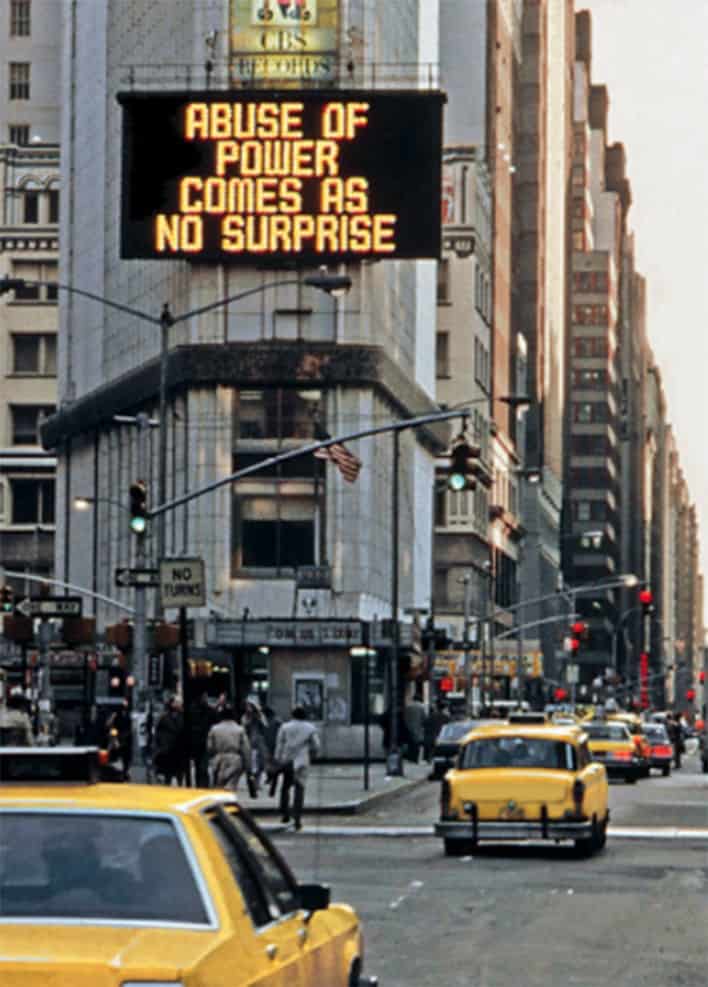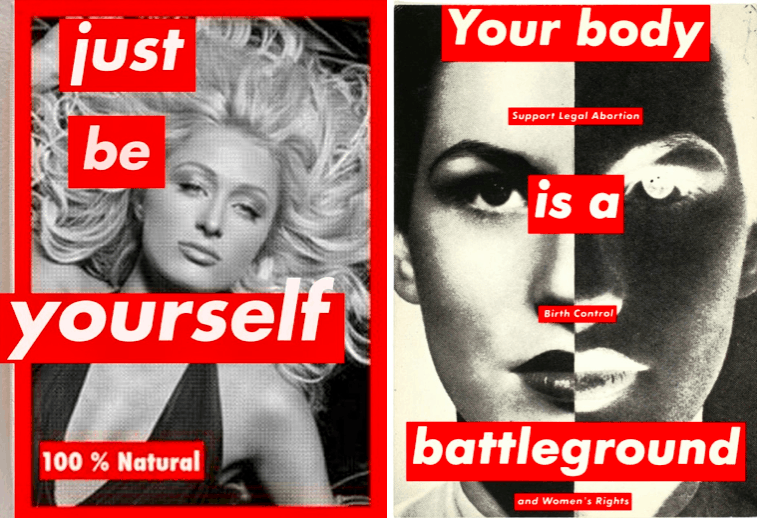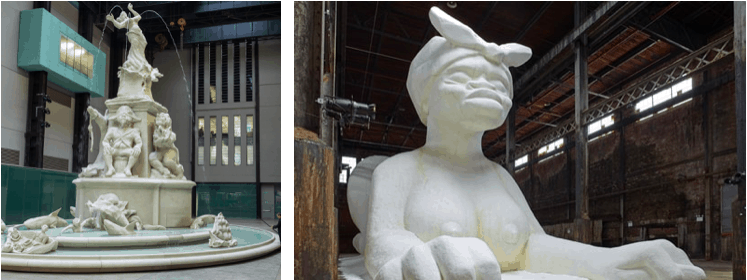Articles & Features
The Art of a Movement:
Protest Art And The Artist As Activist

By Tori Campbell
Artist as Activist
It has been taken as truth for decades now that art is a form of expression. Art has a powerful capacity to illustrate narratives and perspectives, sometimes open to interpretation, and sometimes more direct and explicit in delivery. Due to the expressive nature of art, artists are often also activists; devoting their artistic output to a cause near and dear to their hearts. From fighting for AIDS awareness, to protesting government censorship, artists have been at the forefront of activist movements throughout time. Due due to the highly visible nature of their output, not to mention the powerful cogency of their communications, they are often influential voices within their sphere. Explore just a few examples of how artists have acted as activists, and see how they have contributed to local and global protest movements in promoting awareness of their causes.
AIDS Activism & Awareness
American artist Keith Haring’s graffiti-esque pop art grew to global popularity from the humble beginnings of his spontaneous drawings scrawled in New York City’s subways throughout the 1980s. After gaining notoriety, Haring focused his primary-coloured creations on street culture and social activism, portraying characters in sexualised situations to advocate for safe sex and AIDS awareness. Due to a lack of proper government response to the American AIDS crisis, Haring and his fellow artists led the fight against the virus through grassroots education, die-in demonstrations, and awareness-sparking initiatives like the deeply moving NAMES Project AIDS Memorial Quilt, which now displays the names of over 94,000 individuals who died of the virus. Haring is one such name, having passed away in 1990 due to AIDS-related complications after a very short lifetime of advocacy and activism, but only after having crafted iconic imagery that continues to live on in the public consciousness.
Women’s Rights & Representation

Right: Barbara Kruger, Untitled (Your body is a battleground), 1989
American conceptual artist Barbara Kruger’s iconic works of black and white photography overlaid with white-on-red declarative captions often address identity, consumerism, and gender related constructions of power and sexuality with billboard like directness. By combining the postmodernist theory of writers like Walter Benjamin and Pierre Bourdieu with mass cultural imagery, she is able to shine a light on assertions that we take for granted as truths–about women’s value, the role of consumerism in postmodern society, and gender representation. In 1989 Kruger created Untitled (Your body is a battleground) for the Women’s March on Washington in support of reproductive freedom and women’s right to choose. Simultaneously art and protest, the piece is emblematic of both the timely-ness and timeless-ness of Kruger’s artistic activism.
Censorship & Government Criticism
The son of an exiled political dissident, Chinese artist and activist Ai Weiwei’s work is inherently political. Since 1995 Ai Weiwei has been traveling the world, photographing himself flipping off iconic monuments of power in his Study of Perspective series. Describing his photographic project as his personal rebellion against government authorities that disregard the freedoms of the citizens they claim to protect, his series has been extremely controversial. In addition to his photographic work Ai Weiwei also installs large-scale installations and sculptures that aim to spur conversation about abuses of power, exclusionary and arbitrary political borders, and governmental censorship and reductions of freedoms. By utilising traditionally Chinese forms such as the ubiquitous stool that can be found in any parochial Chinese town (see image above), Weiwei alludes to the social and political issues of his home country though his work could be seen as universal.
“The world is not changing if you don’t shoulder the burden of responsibility.”
Ai Weiwei
Big Pharma & Dirty Money in Art
Between 1995 and 2017 the highly addictive painkiller OxyContin brought in $35 billion USD in revenue for Purdue Pharma, most of which went directly into the hands of the Sackler family. The Sackler family, a dynasty of philanthropists have given large sums of money (gained through income arising from the pain, addictions, and deaths of hundreds of thousands of Americans); to popular cultural institutions including the Metropolitan Museum of Art, the American Museum of Natural History, the Guggenheim, Tate Gallery, the Louvre, and many, many more. Understandably, much of the artistic world was outraged to hear that these institutions were built upon the hollowing out of so many families and towns throughout America, prompting legendary photographer Nan Goldin into action. After founding P.A.I.N. (Prescription Addiction Intervention Now) Goldin began her “die-in” demonstrations at museums around the world that had accepted the Sackler family’s financial contributions. The work of Goldin and P.A.I.N. helped to get the Sackler family name removed from the Louvre, and they continue their work in assisting families and victims of the opioid crisis to file a Proof of Claim with the US Bankruptcy Court against the drug manufacturer Purdue Pharma.
“We all choose our fight and this is mine”
Nan Goldin
Freedom of Information & Abuse of Power

© Jenny Holzer, Artists Rights Society, New York.
American neo-conceptual artist Jenny Holzer has always worked with words as her primary medium. From her Trusims and Inflammatory Essays series of the late 1970s — which have been re-exhibited and referenced from the walls of museums to pop musician Lorde’s Grammy dress — Holzer has utilised text and narrative to get her point across. In 2004 Holzer mined the National Security Archive’s store of declassified documents to project more than 30 former governmental secrets obtained through the Freedom of Information Act onto buildings around the world. More recently, her 2012 series Top Secret utilises a group of redacted US government documents related to the wars in Afghanistan and Iraq, while her 2014 series entitled Dust Paintings, based on a declassified special forces report, explores the torture and death of Jamal Nasser, an 18 year old Afghan soldier who died in US military custody. By turning abuses of power into works of art Holzer forces her audience to confront these actions and the opacity that still surrounds them.
“Jenny Holzer does for the digital age what a nail and broadsheet used to do, for example, when Martin Luther pounded his theses onto the church door. She turns every surface into a page, she illuminates not only text but perception, and by projecting these secrets into the night she transforms the words of power into transitory bolts of lightning.”
Thomas Blanton, former director of the National Security Archive
Racism & Colonialism

Right: Kara Walker, A Subtlety… 2014. Photography by Jason Wyche, Courtesy Creative Time.
American contemporary artist Kara Walker is best known for her panoramic silhouette work and stop-motion films that explore the intersections of race, gender, sexuality, and colonialism. In 1994 Walker gained instant notoriety with her cut-paper silhouette mural, Gone, An Historical Romance of a Civil War as It Occurred Between the Dusky Thighs of One Young Negress and Her Heart depicting the sexual violence and slavery of the Antebellum south. Walker now works in multiple mediums, in 2014 she installed a massive sphinx-like sculpture of white sugar, portraying a racist stereotype of a black woman within Brooklyn’s former Domino Sugar Factory — alluding to the shared history of slavery and the sugar industry in the United States. More recently Walker established a 13-metre fountain in the Tate Modern that drew on the colonial legacy of the British Empire and the transatlantic slave trade while obviously aesethetically inspired by the Queen Victoria Monument outside of the Buckingham Palace.
Relevant sources to learn more
Read Ai Weiwei’s article for the NYTimes How Censorship Works
Know of a Sackler-named museum near you? Learn about why it still holds the name
Take a look at street art tributes to George Floyd from around the world
10 Poignant Works of Street Art Around The World in Support of Ukraine
Flowers for Peace: The Spirited Art of Ukrainian Artist Maria Prymachenko That is Now Becoming a Symbol of Hope








